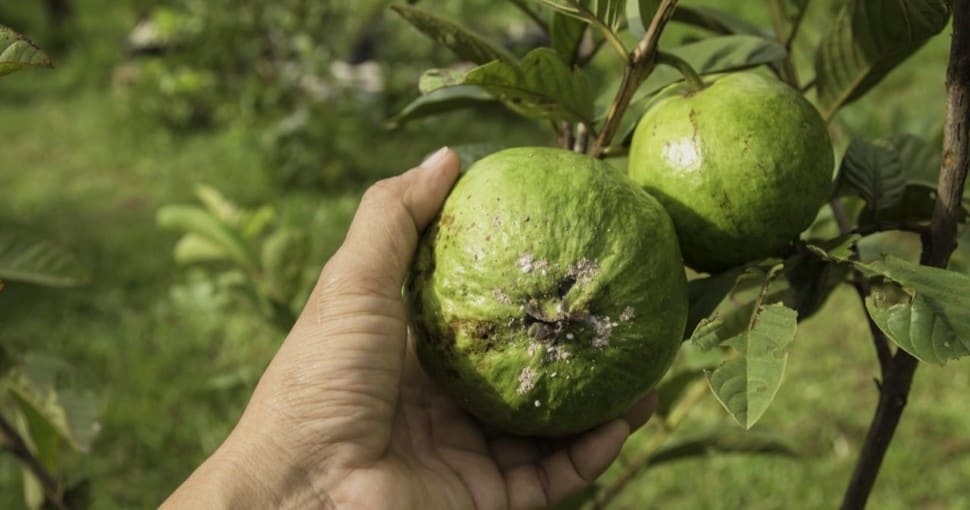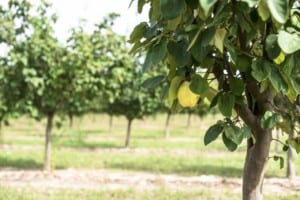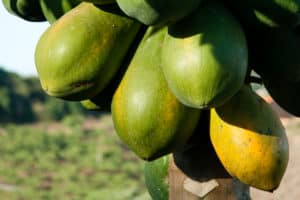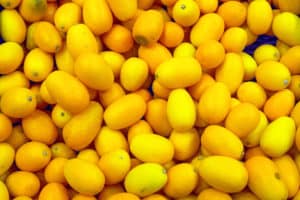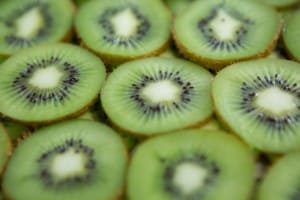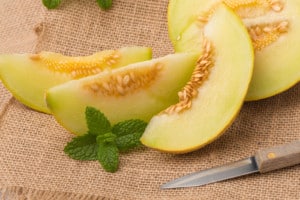Guavas are a great winter fruit packed with vitamin C. Most famous for their signature aroma, guavas are one of the more “tropical fruits” you can find in stores during the winter months when various fresh fruits are hard to come by. So when are guavas in season, you might ask?
Contents
Guavas are in season during the winter months and can be enjoyed between November and April. Guavas are tricky to harvest, though. If you have your own guava tree, you need to consider a couple of things when harvesting your guavas, as they don’t ripen well if picked too soon.
When Are Guavas In Season?
Usually, guavas are in season between November and April. However, if you prune your guava tree correctly, you can enjoy a guava harvest twice yearly. Or, in some exceptional cases, guavas can produce fruit year-round. Guavas were initially found in South America. However, they are now commercially farmed in California and along the West Coast of America.
There are many varieties of Guavas, but the most common variant is red or orange with green skin. The skin of guava is smooth and thick. Guavas can be found in many shapes and sizes, although they are usually about the same size as a small apple.
It can be challenging to determine when precisely you should harvest your guavas. Harvesting too early or too late can both have negative consequences.
When Should You Harvest Guavas?
Although guavas are in season between November and April, this is not a clear indication of exactly when to start picking them. Ripe guava has light green or yellow skin. It is soft to the touch and will bruise easily.
The best determiner of the ripeness of a guava lies in its smell. If you can smell the guavas when approaching your guava tree, they are most likely ready to be harvested. However, you should only pick the guavas that are ready to be picked.
If you pick the guavas while they are still too green, they will not ripen correctly and will taste bland. However, if you leave your guavas on the tree for too long, fruit flies will destroy them. Therefore, you should be sure that the guavas are ripe before you pick them.
To pick a guava, simply pull it off the branch. If the guava is ripe, it will come off the branch easily. Once you have picked your guavas, you will need to use them or store them as soon as possible. Guavas don’t have a long shelf life and go bad within a couple of days.
Can You Eat Guavas That Are Under Ripe?
Green or under-ripe guavas are not harmful to humans and can be eaten. However, they are not as sweet or tasty as ripe guavas.
People who suffer from bloating or who have irritable bowel syndrome should avoid eating under-ripe guavas. The fiber and seeds contained in guava can potentially cause stomach aches and cramps. For this reason, pregnant women should also avoid eating under-ripe guavas.
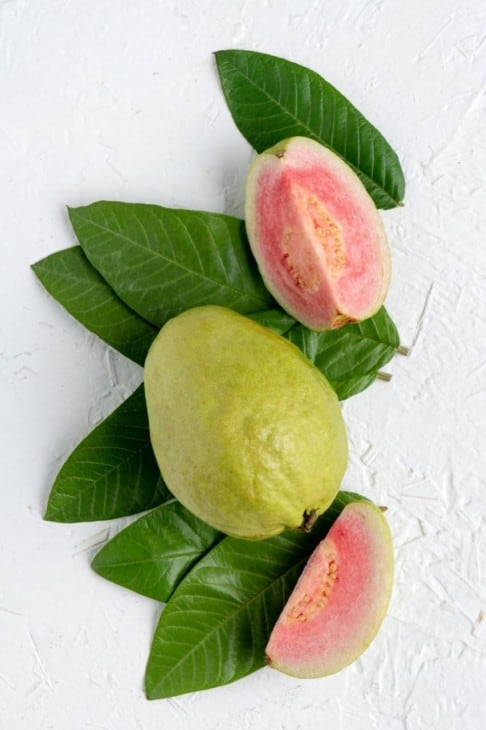
What To Do With Guavas Once Harvested
Guavas can become overripe within a few days of harvesting them. You should therefore store them in an airtight container in the refrigerator. If the guavas you have harvested are not 100% ripe yet, you can leave them to ripen at room temperature until they are ready to be eaten.
Again, the best way to determine if a guava is ripe is by its smell. When preparing your guavas for storage, you need to toss any guavas with bad spots or blemishes. These guavas can cause mold to spread and will make all your guavas go bad.
Rinse your guavas thoroughly and pat them dry with paper towels before storing them in the fridge. When you are ready to eat your guava, cut off the top and bottom tips of the fruit.
Then, cut the guava in half. You can remove the guava seeds if you want. However, the flesh between the seeds is the sweetest part of the fruit. Eating the seeds is also not dangerous, and they can be swallowed whole. Avoid eating the seeds if you have a sensitive stomach. Eating too many guava seeds can have a laxative effect.
You can peel the guava before eating it using a knife. However, you don’t have to peel a guava. The rind of a guava is very high in vitamin C and fiber. Just be sure to wash your guava thoroughly if you don’t want to peel it.
You can then enjoy your guava fruit. Guavas contain high levels of pectin, making them great to use in jams, jellies, and fruit rolls. Guavas are also delicious when served with a simple syrup and ice cream.
Pruning Guavas To Get More Fruit
How and when you prune a guava tree is an important step to ensuring that your guava produces enough fruit. It would be good if you could prune your guava tree annually. Remove any extra shoots that come up next to the main branch.
Ensure your guava tree does not grow taller than ten feet, or else it might blow over in strong winds. Prune your guava tree in the late winter or early spring. This will help encourage your guava tree to produce more fruit.
Regular and correct pruning of a guava tree can not only increase your guava yield but, under the right circumstances, it can also lead to multiple harvests within a year.
What Are The Health Benefits Of Guavas?
Suppose you don’t like eating guavas purely because they are delicious. You still might want to eat them because they are also packed with health benefits. Here is a list of the top health benefits of eating guavas.
- They are incredibly high in fiber. Fiber helps to aid your digestive system and heal your gut. The seeds in a guava have even more fiber and can help ease constipation.
- Guavas contain many antioxidants, which can help heal damaged cells and lower the risk of heart disease.
- Guavas are both high in fiber and low in calories, making them a good snack for weight loss.
- Guavas are high in vitamin C, which helps keep your immune system strong and helps to keep your skin healthy. Vitamin C also repairs skin damage caused by the sun.

